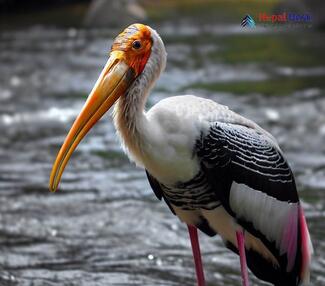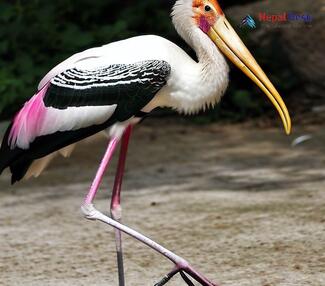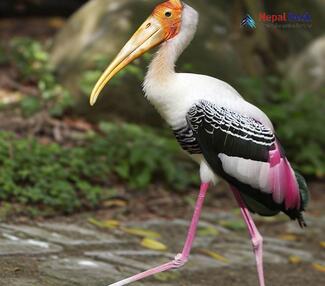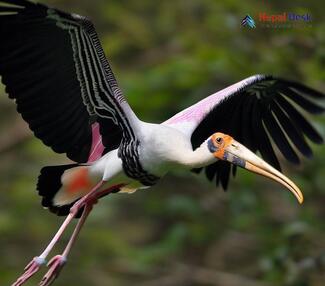The Painted Stork (Mycteria leucocephala) is a captivating bird species found mainly in the wetlands of tropical Asia. With their striking appearance and graceful movements, these birds are a remarkable sight for bird enthusiasts and nature lovers alike. In this article, we'll delve into the physical features, taxonomy, habitat, and presence of Painted Storks in Nepal.
Physical Features
One of the key factors that make Painted Storks stand out among other bird species is their distinctive appearance. Adult Painted Storks are large wading birds with a height of approximately 93-102 cm and a wingspan reaching up to 150 cm. Their bodies display a blend of white plumage with black wingtips, while their heads and necks are characterized by varying shades of pink.
Notably, the bright orange-yellow bill stands out against the elegant backdrop of their body colors. This long, downward-curved bill is handy for hunting fish in shallow waters. When it comes to legs, the tarsi are reddish-pink in color with partially webbed feet – an essential feature for wading through marshy habitats.
Taxonomy
Painted Storks belong to the family Ciconiidae under the order Ciconiiformes. Sharing its family space with some 19 other stork species, Mycteria leucocephala distinguishes itself through its unique color patterns and migratory behavior.
Habitat
Favoring wetlands as their primary habitat, Painted Storks can be found near marshes, ponds, rivers, and agricultural fields. They don't mind human proximity as long as there's a continuous supply of shallow water rich with aquatic life – primarily fish and amphibians which form their diet.
Presence in Nepal
While widespread in many parts of tropical Asia, the Painted Stork holds a special place in Nepal's rich avian biodiversity. Designated as a locally common resident breeder and migrant visitor, this resplendent bird graces several regions in Nepal, including Chitwan National Park and Koshi Tappu Wildlife Reserve, known to attract many birdwatchers and nature enthusiasts each year.
The presence of Painted Storks in Nepal stands as testimony to the nation's commitment to wildlife conservation. By protecting the bird's habitat and being sensitive to their needs, it ensures that generations to come can witness these splendid creatures soar gracefully through Nepal's skies.




